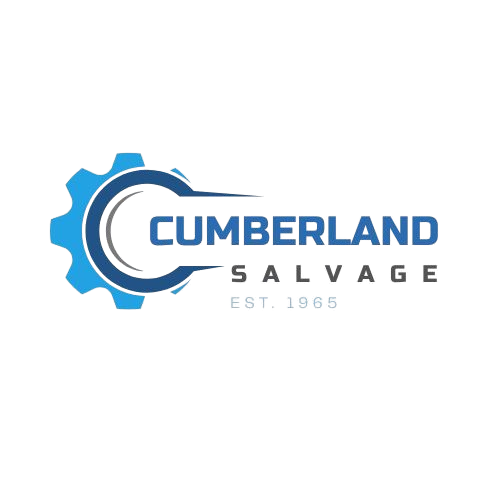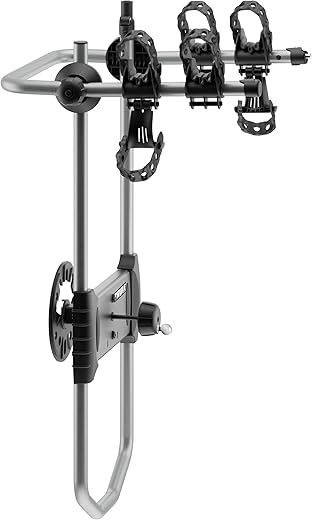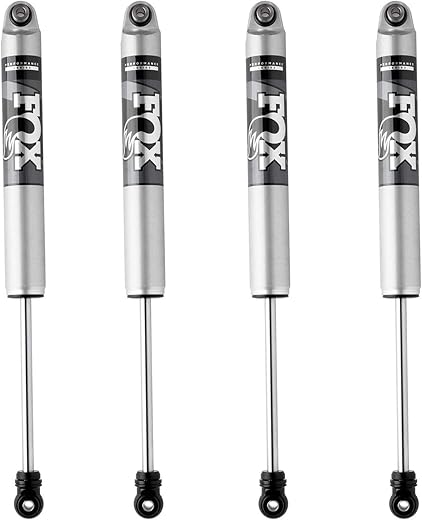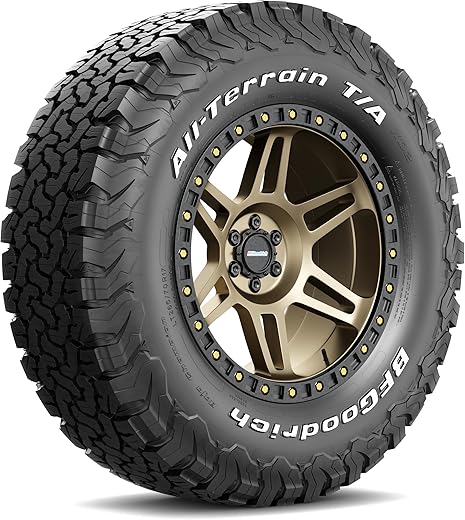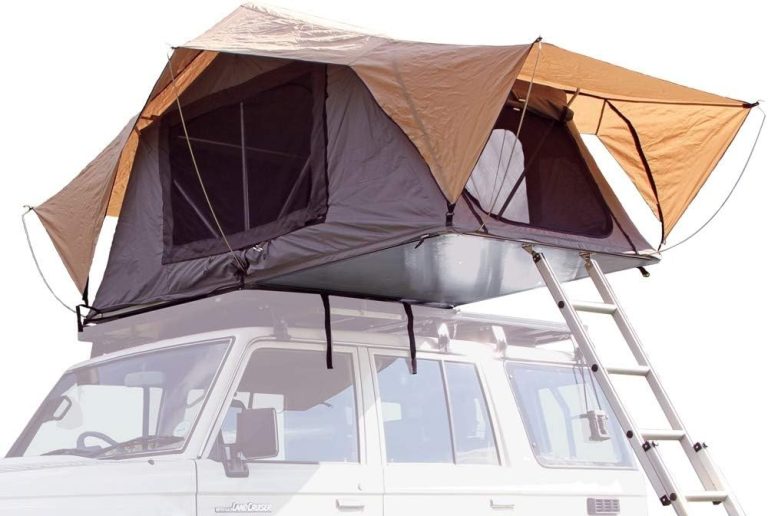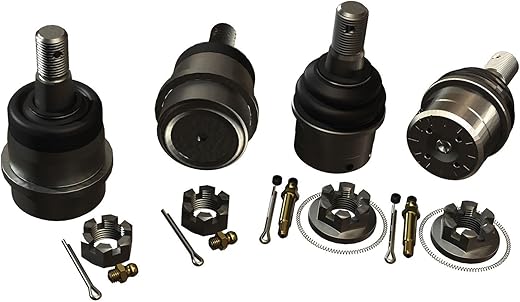Top-Rated Best Roof Rack for Jeep Wrangler
Ready to haul a rooftop tent, kayak, and your neighbor’s ego? Let’s pick the rack that won’t let you down.
Your Jeep Wrangler wants to carry more than attitude. You’ve got gear, plans, and a roof that’s sitting empty. That’s wasted space.
This roundup cuts through the fluff. Short, clear picks that match real needs — heavy overlanding, clean OEM fit, or budget crossbars. No nonsense. Just useful choices you can act on.
Our Top Picks




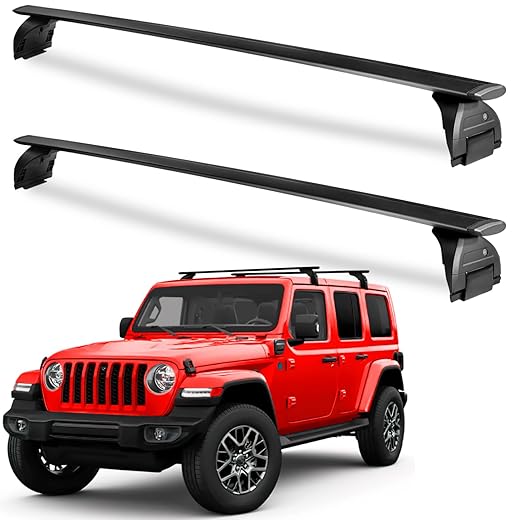
Rhino-Rack Backbone Internal Structural Roof System
You get an engineered internal structure that dramatically increases roof load capacity and distributes weight into the vehicle body, making heavy rooftop platforms and accessories practical. It’s a premium installation that requires drilling and care during fitment but unlocks far greater useful capacity for overlanding builds.
Why the Backbone matters
You should choose the Rhino-Rack Backbone if you plan to mount a full Pioneer platform or other heavy-duty rooftop systems and want the roof to carry dynamic loads safely. This internal frame transfers load to the vehicle’s structure instead of relying solely on the fiberglass hardtop skin.
Engineering and capability
The kit installs three mounting plates per side and creates an interior frame that increases moving load capacity (dynamic) significantly—Rhino-Rack states about a 76% increase compared to mounting directly to the hardtop. That allows you to run a platform, multiple accessories, and heavier cargo without overstressing the top.
Users report that once installed and paired with a Pioneer platform, the system feels rock solid on trails and in urban hauling. The trade-offs are practical: installation includes drilling into the hardtop, attention to sealants, and careful torqueing.
Installation and maintenance notes
You should be prepared for a more involved install compared to clip-on crossbars. Rhino-Rack’s instructions can be terse; many installers recommend watching step-by-step videos and removing the hardtop for easier drilling. Pay attention to sealing drilled holes to prevent leaks and use thread-locking compounds where appropriate.
Bottom line
If you need a serious, durable foundation for heavy rooftop gear and want the confidence to mount a full platform or rooftop tent, the Rhino-Rack Backbone is the premium structural solution. It adds complexity during installation but unlocks capabilities that simple crossbars cannot safely provide.
Mopar OEM Hardtop Roof Rack Kit
You get a genuine Mopar kit engineered specifically for Jeep JL hardtops, offering excellent fit and finish and a low-profile look. It mounts to the drip rail without drilling, delivers dependable performance for carrying kayaks and cargo, and is the best choice if you want factory-grade integration.
Why choose an OEM Mopar rack
You should pick this Mopar rack if you prioritize perfect integration, a factory appearance, and predictable compatibility with your Jeep JL hardtop. It’s designed by the manufacturer for the vehicle, so you’ll avoid many of the fitment hassles that can happen with universal racks.
Design and real-world performance
This kit mounts directly to the hardtop drip rails and uses aluminum crossbars with a black powder-coat finish. The design emphasizes a low-profile aerodynamic shape that most users report produces little or no whistling when installed exactly as instructed. Installation is tool-friendly and doesn’t require drilling, so you won’t compromise your roof.
Owners consistently praise the fit and lack of rattle on rough roads; many use it to carry kayaks and overlanding gear without issues.
Things to keep in mind
You should expect to pay a premium for genuine Mopar hardware, but that cost buys the assurance of factory fitment and long-term compatibility. One caveat reported by users is that small trim pieces or mounting clips, if lost, can be hard to replace through aftermarket channels.
Bottom line
If you want a rack that looks like it belongs on your Jeep from the factory and performs reliably on highway and trail, this Mopar kit is hard to beat despite the higher price. Choose this when fit, finish, and OEM compatibility are your top priorities.
SmittyBilt One-Piece Defender Roof Rack
You’ll get a robust, fully welded steel platform built for serious gear-hauling and overlanding use. The large footprint and welded construction give you a solid work surface for lights, rooftop tents, and bulky cargo, though the steel weight and finish may require periodic care.
Who this rack suits
You should choose the SmittyBilt one-piece Defender rack if you plan to mount heavy or bulky gear—rooftop tents, multiple lights, large recovery equipment, or an overlanding setup. It’s designed for users who value a stable, welded platform over lightweight convenience.
Build quality and features
The rack is made from 16-gauge, fully welded 1" round steel tubing and provides a sizable carrying surface with 4-inch raised sides to help retain cargo. Mounting brackets are included to simplify install and avoid drilling into factory surfaces, which is a practical advantage if you want a reversible upgrade.
In practice, you’ll notice the rack’s solidity: it doesn’t flex under load and gives you real utility when organizing gear for long trips.
Practical trade-offs
You should be prepared for the added weight and center-of-gravity impact. Steel racks demand attention to finish and may need touch-up paint or rust inhibitors if you operate in salty or wet conditions. The larger profile also reduces low-clearance access unless you remove the rack or plan around it.
Bottom line
For overlanders and owners who need a dependable platform for heavy accessories, this SmittyBilt rack is a pragmatic, workmanlike solution. It’s not the lightest or most aerodynamic choice, but it provides the strength and real estate you need for serious rooftop setups.
260 lb Heavy Duty Aluminum Crossbars
You receive a robust pair of aluminum crossbars with a competitive 260 lb distributed capacity that blend performance and value. Installation is generally straightforward and they integrate well with many cargo accessories, though fitment quirks exist on some non-listed vehicles.
Who should consider these bars
You should pick these crossbars if you want higher load capacity in an aftermarket set without stepping up to OEM or specialized platform systems. They’re a good choice for carrying rooftop boxes, kayaks, or multiple lighter items where overall weight is spread across the bars.
Construction and capacity
The bars are reworked from OEM geometry and built from aircraft-grade aluminum with a matte black finish. The advertised 260 lb distributed capacity (typically 130 lb per bar) gives you extra margin for carrying heavier rooftop loads compared to many budget alternatives.
Owners report solid feel and a secure installation when instructions are followed—some note that starting all fasteners loosely and then torquing in sequence eliminates fitment frustration. Several reviewers used blue Loctite on fasteners for peace of mind.
Fitment and practical tips
You should confirm vehicle compatibility before purchase: while the bars list broad Jeep Wrangler and Gladiator coverage, a few users found the bracket angle didn’t match other vehicle rails (e.g., some GM SUVs). For best results, assemble loosely, align, then tighten. If you plan long-term use under heavy load or rough terrain, treat threads with medium-strength thread locker.
Bottom line
These crossbars offer an excellent combination of capacity and value if you need more payload than typical budget bars provide. They’re not as refined as OEM systems and may need a little attention during installation, but they deliver strong performance for most expedition and cargo needs.
200 lb Aluminum Crossbars with Locks
You get a lightweight, corrosion-resistant crossbar set that supports substantial cargo for its price class. Installation is straightforward and the low-profile design helps reduce wind noise, though the supplied locks are relatively simple and can be bypassed with basic tools.
What this rack is for
You should consider this set when you want an affordable, lightweight roof-crossbar solution that carries everyday gear—luggage, bikes with racks, or a rooftop cargo box—without adding a lot of weight to your Jeep hardtop. It’s aimed at owners who want utility and a clean look without paying OEM or premium prices.
Key features and real-world benefits
You’ll find a straightforward aluminum build and a streamlined profile designed to limit wind noise. The seller emphasizes aircraft-grade aluminum for strength and corrosion resistance, and a claimed 200 lb rooftop rating (distributed load).
These features make it a solid daily-use option: users report easy single-person installs and quiet highway driving when properly torqued.
Practical considerations and limitations
You should be aware of a couple of practical trade-offs. The locking cylinders included provide convenience but are not high-security—several owners found them easy to turn open with a screwdriver. Fitment is generally good for the specified years and hardtops, but plastic end caps and small finishing quirks were reported by some buyers.
Bottom line
If your priority is value—low weight, decent load capacity, and minimal wind noise—this is a pragmatic choice. You’ll save money and gain reliable day-to-day performance, but if you require rock-solid lock security or OEM-level finishing, look at higher-end options instead.
Final Thoughts
Top pick for heavy-duty overlanding and rooftop tents — Rhino-Rack Backbone Internal Structural Roof System. Why: it converts your roof into a true load-bearing platform by routing weight into the vehicle structure. That means you can mount large platforms, tents, and heavy accessories with far less stress on the sheetmetal. Actionable advice: budget for a professional install (it requires drilling and precise fitment) and use this if you plan to carry rooftop tents, heavy cargo, or a full steel platform.
Top pick for everyday Jeep owners who want clean fit and easy install — Mopar OEM Hardtop Roof Rack Kit. Why: engineered for Jeep JL hardtops, it clamps to the drip rail with factory-level fit and finish and doesn’t require drilling. Actionable advice: choose this if you carry kayaks, bikes, or moderate cargo and you want a low-profile, OEM-looking solution with straightforward installation.
FAQ
Short answer: sometimes. The Rhino‑Rack Backbone is an internal structural system and does require drilling and careful fitment. Mopar’s hardtop kit mounts to the drip rail and avoids drilling. Many aftermarket crossbars clamp to existing rails or door frames and are drill‑free. Always read the install instructions and plan for professional help on any system that modifies the roof structure.
Usually not safely. Crossbars rated 200–260 lb are rated as distributed loads and are fine for light cargo. Rooftop tents create high static loads when deployed and concentrated mounting forces. If you want a tent, choose an internal backbone or a purpose‑built welded platform (or verify the rack and vehicle roof are explicitly rated for tent use).
Look in your owner’s manual for the roof load rating — that’s the authoritative number. Rack vendors will quote distributed capacity (e.g., 200–260 lb). Match the rack’s rating and the vehicle manual, and include the weight of your platform, tent, and passengers when parked on the roof (static load). If in doubt, choose a structural solution like the Rhino‑Rack Backbone.
Any added roof weight raises your center of gravity and increases wind resistance. A welded steel rack (like the SmittyBilt) is extremely durable but heavier than aluminum options. Expect a small hit to handling and MPG; mitigate it by loading low, removing the rack when not needed, and choosing aerodynamic profiles where possible.
They’re a deterrent for opportunistic theft but not impenetrable. The lock that comes with budget crossbars is better than nothing. For higher security, use hardened cable locks, alarm systems, or racks with integrated, higher‑quality locking hardware.
Some you can. Mopar hardtop kits and many aluminum crossbars are designed for DIY installation with basic tools. The Rhino‑Rack Backbone and large welded platforms usually need precise alignment and may be best handled by a pro or an experienced installer. If you’re doing drilling into the roof or vehicle structure, plan for professional installation to avoid leaks and fitment issues.
